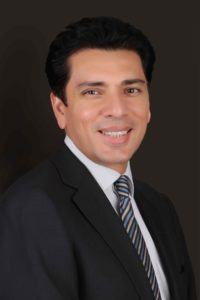Mahindra Partners funded Medwell Ventures’ chief Vishal Bali talks about the company’s hub-and-spoke model, raising US $35 million over three years, and why home healthcare won’t go the way of telemedicine in India…

After 25 years in the hospitals business, Vishal Bali pivoted into home healthcare. The former group CEO of Fortis Healthcare partnered up with former Quintiles India boss Ferhzaan Engineer, and Lalit Pai and Himanshu Shah—both previously co-founders of clinical research solutions company Cytespace Research Management—to start Medwell Venture in April 2014. The company is aims to establish a patient centric model, provide speciality services across chronic diseases and forge technology partnerships for scalability.
On the sidelines of the Organisation of Pharmaceutical Producers of India’s Sixth Healthcare Access Summit, Bali, who is also Asia head for private equity firm TPG Growth’s healthcare investments, spoke to The Smart CEO about Medwell’s hub-and-spoke model, raising US $35 million over three years, and why home healthcare won’t go the way of telemedicine in India.
Edited excerpts:
Why this interest in the home healthcare space?
The institution of the family physician is disappearing in the cities. When my grandparents were ageing or when we had to be given vaccines, the family doctor would pick up his bag and come home. He told us what to do, which hospital to go to—everything. We do the same thing. It’s just that we have built an ecosystem around it, with a nurse, a physiotherapist, a home-dentist, and a lot of technology where the doctor can remotely manage 10 patients in the time it would have taken to see one earlier.
Why it makes sense from business perspective is when you look at the percentage of people in this country who have a chronic disease or who are going to get a chronic disease, that number is massive. That number, when extrapolated into the opportunity around home healthcare today is almost around US $10 billion to US $15 billion as a market size. Eighty per cent of our work is management of chronic diseases. These patients end up getting hospitalised repeatedly, typically for 48-72 hours, but they don’t really need hospitalisation. They don’t need surgery or procedures beyond, say, oxygen therapy.
Is it a problem sourcing skilled medical and paramedical staff?
Home healthcare is a marriage of logistics and front-end healthcare services, along with a strong backbone of technology on patient monitoring, patient data, and therapy that goes along with the treatment. We are not an aggregator, we are not a platform. Our entire 1,500 staff is on our rolls.
The demand supply gap around medical and paramedical workforce is massive. That’s where technology can help. One has to provide home healthcare with a care protocol and a care plan. A care plan does not necessarily mean that a doctor or physiotherapist or nurse or respiratory therapist is visiting a patient every day. When it comes to the delivery of the care plan, it has both service influence at the front end and a technology back end where we remotely manage the productivity of the staff—we have to manage their logistics right.
Tell us a bit about your model.
One of the key differentiations we built into our model of healthcare is to have a distributed branch network. Like in Bengaluru, we have five branches. In Mumbai, we have six branches, in Hyderabad, we have five branches. We look at our branches as logistics hubs, particularly in cities where managing distances is becoming more and more difficult. These are like [the courier service] DHL where you have a GPS up, people come and pick up their packages and they go everywhere. Our branches are our logistic hubs. All the staff comes in there, they have their data sheet with details of where they need to go and they have their vehicles. They get into their vehicles with their medical supplies and they go. We are creating micro markets out of these cities. And through the branch network, we are covering these micro markets. Effectively, that makes it easier for us to manage the productivity per individual.
How do patients find you?
Many of our patients are referred to us by clinicians and hospitals. Some also come to us directly.
How long does a patient stay in your system?
These are not just older patients. We are not hospice or end of life care. We are focusing on chronic diseases and those have a lifetime to them, sometimes 70-80 years. Our youngest patient is 15.
In 2016, you wrote a paper with KPMG and FICCI on investment in the healthcare sector. How is investor sentiment in home healthcare specifically?
I think everyone (in home healthcare) who sought funding has received it. Four companies have got investments, including us. In our case, we raised funds from the Mahindra group, and that also brings a lot of credibility with it.
Ten years ago, there was excitement around telemedicine and what technology could do for healthcare. That failed to have the impact that people thought it might have. What’s to say your model of home healthcare won’t go down the same path?
Telemedicine had two components to it: there was teleconsult and then there were areas like teleradiology and telepathology. What has done really well is moving results from one part of the system to another part of the system. Teleconsult did not do as well because, at the end of the day, physicians felt that they want to see the patient physically. The other problem then was that the backend bandwidth wasn’t very good. Now, we have to see telemedicine in version 2.0, and with what you can do on the phone compared with 5-7 years ago. I see remote patient monitoring as an area of influence, where doctors’ productivity can be enhanced, provided they have the ecosystem of support staff.
Do you think home healthcare will go the way of e-commerce and fight it out till there are only one or two big competitors, or can lots of players coexist, like in the fintech sector?
Companies are getting structured around cities. Everyone is choosing their geography in a manner, and then from there one is going to expand. Which means that north, south, east, west, you will have companies that will look at the healthcare business as a regional opportunity first. Very few of us will go national, just as very few hospitals have gone national.
